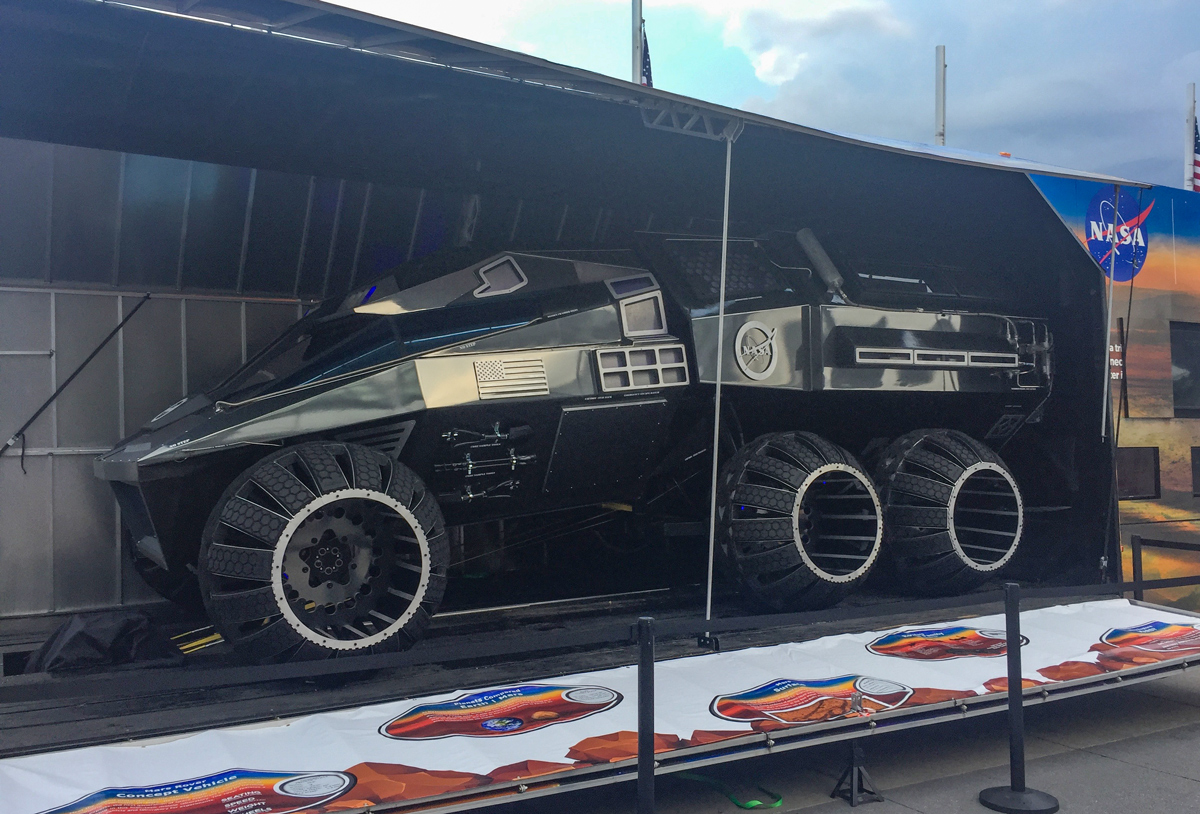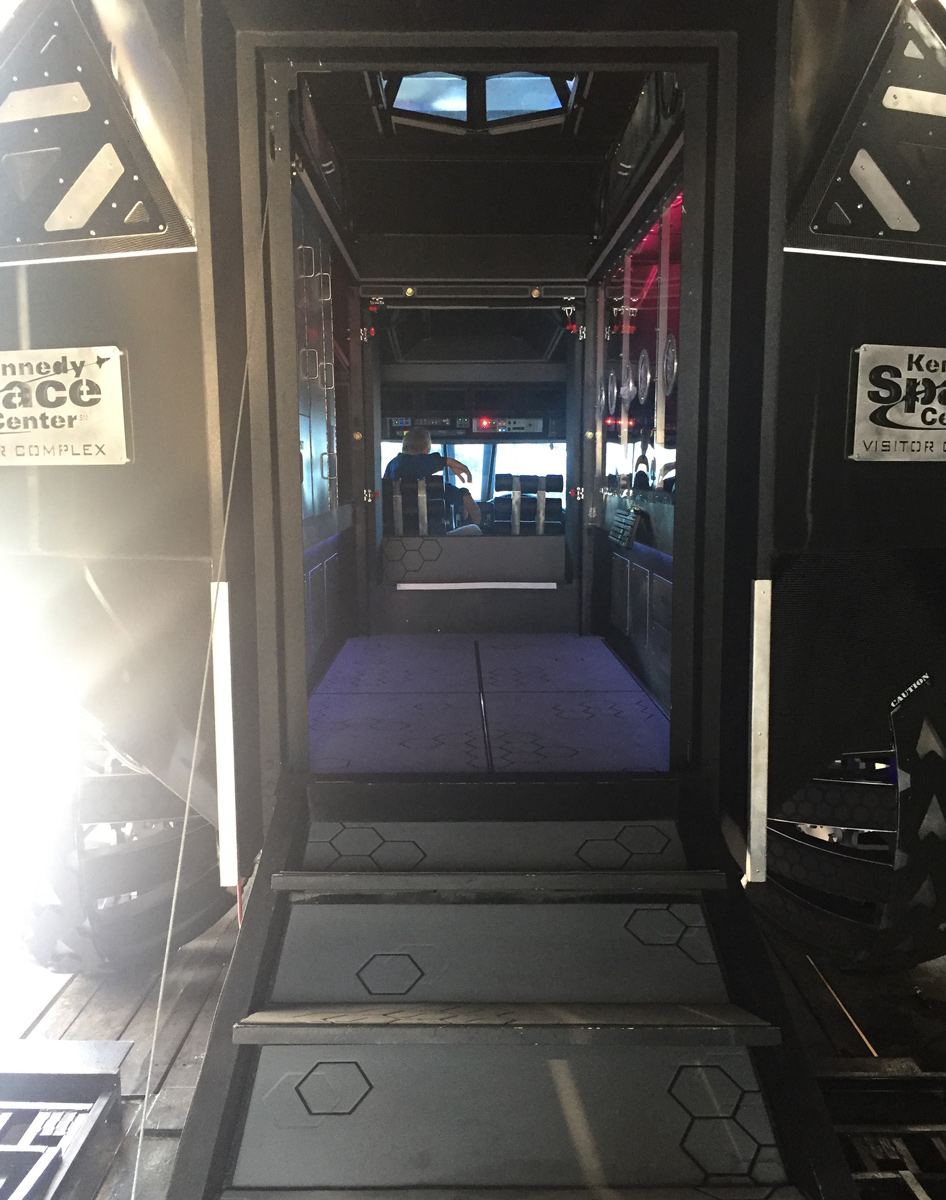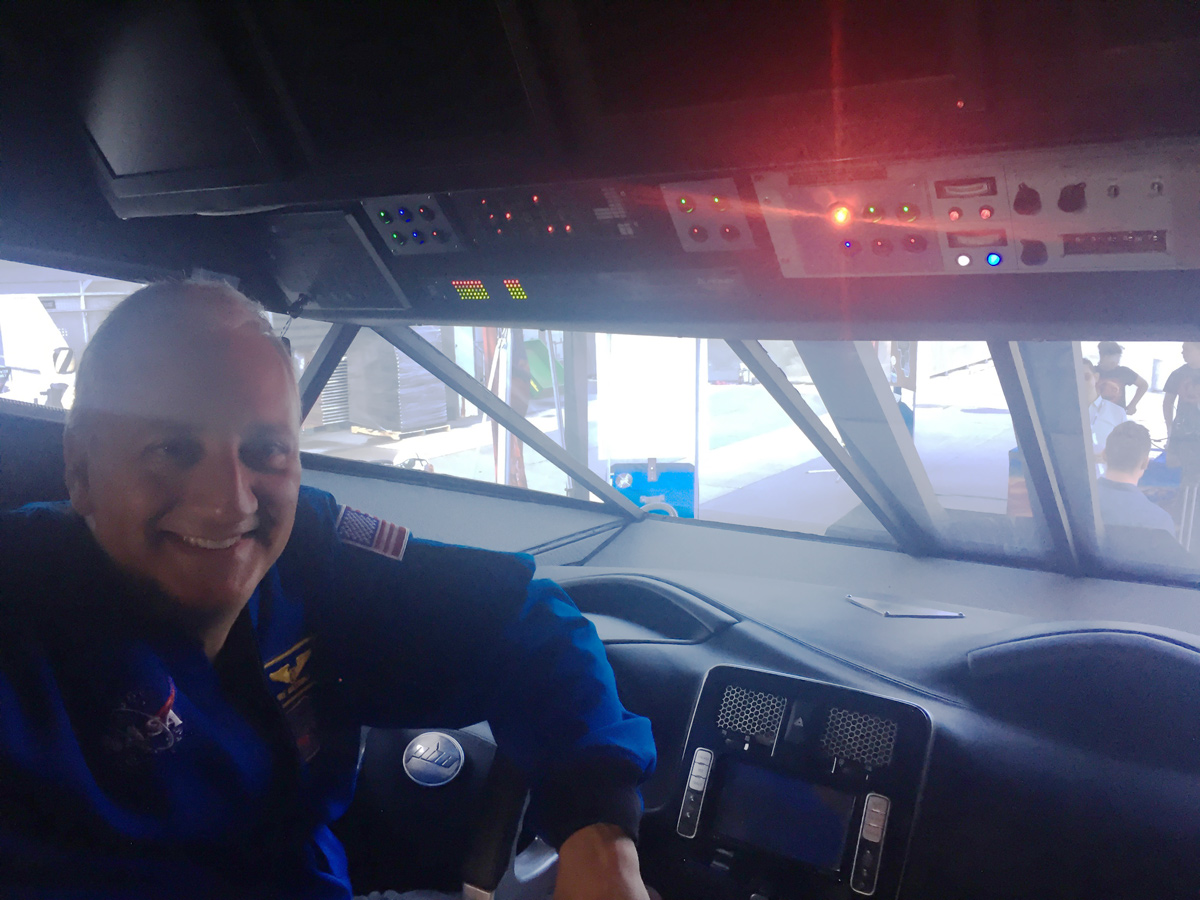We Explored NASA's Concept Mars Rover, and It Was Out of This World
NEW YORK — Automakers aren't the only ones who make concept cars. NASA does too, but this one is for off-roading on Mars.
The Kennedy Space Center Visitor Complex's Mars rover concept vehicle arrived at the Intrepid Sea, Air & Space Museum today (Aug. 4), where it will remain on exhibit until Sunday (Aug. 6). Its arrival is part of Kennedy Space Center's Summer of Mars Experience Tour.
Space.com got a chance to explore the rover just after its arrival and talked with retired astronaut Mike Massimino about the concept vehicle and what's coming next for NASA. [Missions to Mars: A Robot Red Planet Invasion History (Infographic)]
The Intrepid is currently hosting its Space and Science Festival. (Space.com will have a booth and display there Aug. 5 and 6.) The festival features demonstrations from NASA, local educators and universities, and NASA staffers will give talks about travel to other planets.
With input from NASA engineers and based on their specifications, Cape Canaveral, Florida-based Parker Brothers Concepts built the vehicle. The rover weighs about 5,500 lbs. (2,500 kilograms) and has six wheels designed with open structures rather than air-filled tires, similar to those on the Mars Curiosity rover currently exploring Mars. The interior looks more like an aircraft than a road vehicle, and it has seats for a driver and a co-pilot, as well as one behind those two. The interior also includes a glove box, which would hold Martian soil and rock samples.
Odds are, a real crewed Martian rover wouldn't look quite like this: A look at the pictures of prototype rovers designed by NASA shows a very different design aesthetic.
For one thing, it's unlikely to be black, since any astronaut vehicle must reflect radiation, not absorb it. Keeping the interior cool in an atmosphere like that of Mars, which has only 1 percent the pressure of Earth, is as big a problem as staying warm on a planet that can reach minus 243 degrees Fahrenheit (minus 153 degrees Celsius) at the poles. It probably would also dispense with the flashy blue LEDs on the side.
Breaking space news, the latest updates on rocket launches, skywatching events and more!
That said, the vehicle is a good look at possible future Mars rovers, Massimino told Space.com. "It's meant to inspire people," he said. "This isn't the design they'd use."
Massimino, who flew on two space shuttle missions (one of which was the last to repair the Hubble Space Telescope), notedthat even though the United States doesn't currently send humans to space on its own spacecraft (it relies on Russian Soyuz craft to get to and from the International Space Station), the country will be able to do so when the Orion crew vehicle is ready (NASA estimates range from 2021 to 2023). He is also optimistic that private spaceflight companies such as SpaceX and Boeing will come up with new designs, even as NASA tries to get the next-generation Space Launch System, which would propel Orion, ready to fly. "It doesn't all have to be NASA," he said.
In addition, Massimino noted that such concept vehicles can help define the engineering parameters that scientists, astronauts and NASA want. The glove box, for example — which, in the concept vehicle, takes up the right side of the back compartment — might change as future design iterations reflect what planetary scientists need — for example, more space for instruments.
Such a rover would be the largest object humans have ever sent to another world. The Curiosity rover weighs about 2,000 lbs. (900 kilograms), which is more than one-third the weight of the concept rover. Therefore, launching that kind of equipment would need either multiple launches or a single heavy-lift rocket. According to SpaceX, the company's current Falcon 9 rocket can lift about 4,000 lbs. (1,800 kg) to the Red Planet; SpaceX says the upcoming Falcon Heavy rocket will be able to get 16,800 lbs. (7,620 kg) there, though that hasn't been fully tested or proven yet.
Technical challenges aside, Massimino said what's really necessary is commitment — and funding is only a part of the equation. "I could see a cooperative mission," he said, in which the U.S. would share some costs with another country. "People have figuredout a lot about how to get there and [how] to stay alive," he added. "We can definitely do it."
Follow us @Spacedotcom, Facebook and Google+. Original article on Space.com.

Jesse Emspak is a freelance journalist who has contributed to several publications, including Space.com, Scientific American, New Scientist, Smithsonian.com and Undark. He focuses on physics and cool technologies but has been known to write about the odder stories of human health and science as it relates to culture. Jesse has a Master of Arts from the University of California, Berkeley School of Journalism, and a Bachelor of Arts from the University of Rochester. Jesse spent years covering finance and cut his teeth at local newspapers, working local politics and police beats. Jesse likes to stay active and holds a fourth degree black belt in Karate, which just means he now knows how much he has to learn and the importance of good teaching.




